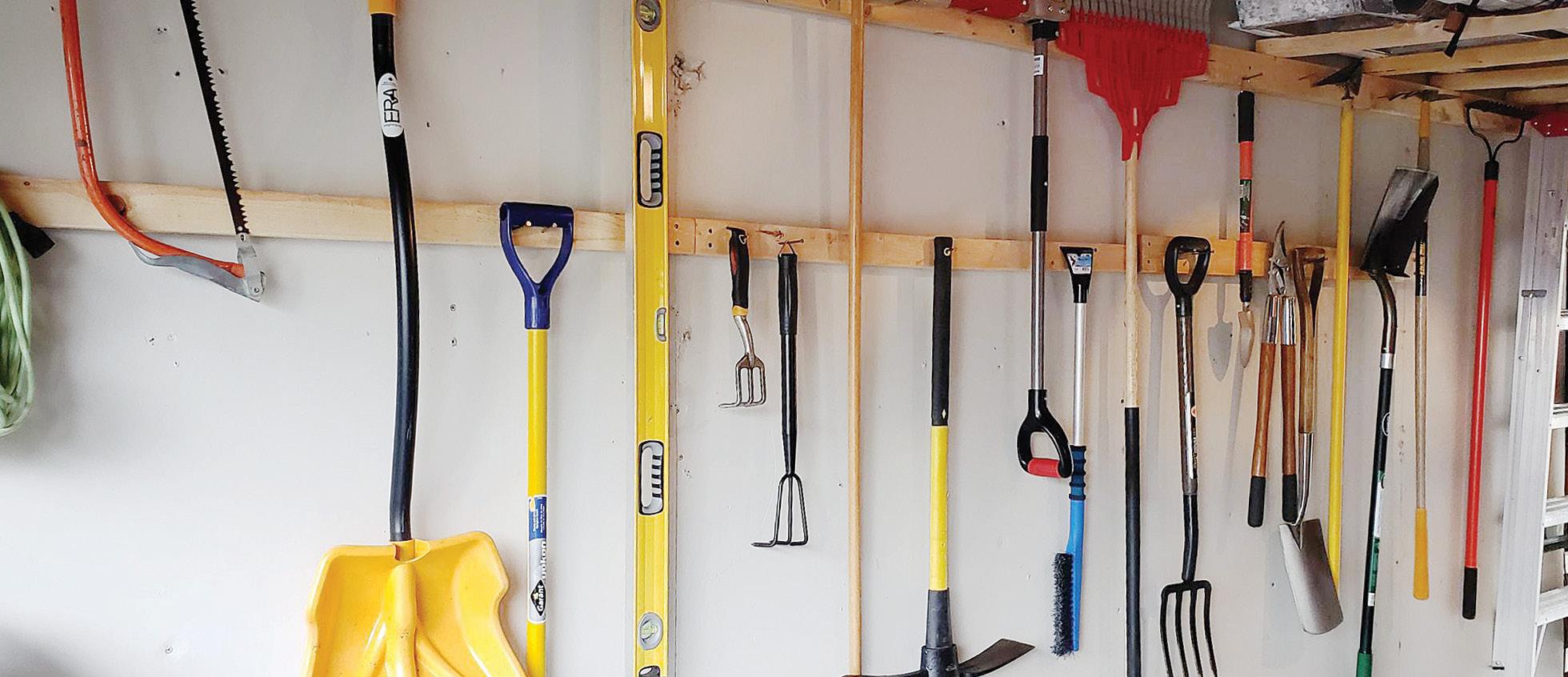
5 minute read
Beautiful Gardens: Helen Hogue, Winnipeg

Beautiful Gardens
Advertisement
Helen Hogue WinnipegStory and photos by Shauna Dobbie
Only about 5 percent of monarch eggs reach
adulthood, but when Helen Hogue gets hold of them, the number increases to over 90 percent. This 83-year-old woman, living at the very western edge of Winnipeg, took to butterfly husbandry a few years ago.
Her first monarch experience was at Prairie Originals, a nursery in nearby Selkirk. She was on a tour, and at the end, the leader brought an envelope out of the fridge. The envelope had a monarch in it, kept in diapause by refrigeration. “Would anybody like to release it?” the tour leader asked. Helen raised her hand and a passion was born.
Helen also volunteers at the local school, where the Kindergarten kids bring in purchased tiny painted lady caterpillars as part of the curriculum. She helps the children foster the butterflies through the caterpillar and chrysalid stages then invites the wee ones with their butterflies to release them in her garden.


The last few years she has been raising monarchs on her screened porch. Milkweed is the only species monarch caterpillars can eat. Helen goes out every morning in her housecoat to bring in milkweed leaves from her garden and her neighbour’s. Some have monarch eggs, some have tiny caterpillars, and all are great food for the caterpillars already housed in butterfly cubes on her porch.
The stems of the milkweed go into floral tubes— the bulbs filled with water you find on long-stemmed roses—and those tubes go into upside-down egg cartons covered in plastic wrap. Covering the egg cartons in plastic wrap makes them easy to clean, which is something a butterfly raiser must deal with a lot. Helen cleans her habitats up to three times per day. Monarchs eat a lot, especially as they get bigger, and that means they leave a lot of frass (poop) behind. If you don’t clean up the frass, the caterpillars may take bacteria with them when they form crysalides, which can lead to death.
Helen’s house, early in the season, ready to burst forth with blooms and butterflies.
Gardening Helen in her element.
50 • 2020 Issue 1 localgardener.net



A butterfly feeder.
A quiet corner of the garden.
localgardener.net Issue 1 2020 • 51
Hostas will attract butterflies when they bloom.
A girl steps timidly among the alyssum.



Blind man’s bluff!
It takes about five weeks from a newly laid egg to a butterfly, and in that time the creature goes from the size of a pin head to six or seven inches across. This year, Helen raised 366 monarchs with 16 dying before she could release them. They can die for a host of reasons, from a chrysalis falling when it is newly formed and still wet, to genetic issues. Helen’s numbers are good news for a species that numbered around 1 billion in the 1990s and was reduced to just 56 million a few years ago. That’s a 95 per cent drop.
There are several reasons posited for the decline in monarchs, but the eradication of milkweed is a big one. Common milkweed (Asclepias syriaca) has been the bane of farmers since they arrived in Canada. It spreads by underground rhizomes, which makes it difficult to get rid of in a field; livestock poisoning themselves by eating it has also been expressed as a worry, but most livestock won’t bother with it.
Helen grows them anyhow. “The flower on it is a huge, big pink, and it smells almost like lilacs,” she enthuses. She also grows a couple of other varieties of milkweed that are less invasive.
She’s been gardening since her kids were teens, but lately her tastes are moving towards native flowers; a favourite is Joe Pye weed, which is incredibly attractive to butterflies because of its high nectar content. But she isn’t a purist and plants zinnias every year to give plenty of colour in the fall while adding to the butterflies’ food source. C
Butterfly lingo
Chrysalis: when the butterfly hangs from a surface and morphs into a hard shell, between caterpillar and adult. Chrysalid: the adjective form for chrysalis. Chrysalides: the plural of chrysalis. Imago: the adult stage of a butterfly. Instar: one of several stages of the caterpillar between egg and chrysalis. Monarchs have five instars. Eclose: when the butterfly comes out of the chrysalis, kind of like hatching from an egg.
52 • 2020 Issue 1 localgardener.net
The cycle of raising Monarch butterflies Photos by Helen Hogue
Caterpillars swarm the milkweed, eating fast.
Helen’s ingenious invention: an egg carton covered with plastic wrap! It makes cleaning so much faster.
Chrysalides at different stages of development at the top of the butterfly habitat, ranging from green, newly formed to black, ready to open.
Newly eclosed butterflies, drying their wings.






Zinnias in the floral tubes, to offer a first meal to new butterflies.
One of the butterflies, ready to take wing.
localgardener.net Issue 1 2020 • 53
These flowers in Helen's garden
A basket of petunias and dusty miller.
Delphinium.

Milkweed in bud.




Daisies.
Yarrow.
54 • 2020 Issue 1 localgardener.net
are butterfly magnets
Black-eyed Susans.
Ratibida.

Sweet peas.




Mallow and larkspur.
Dill is the preferred food of the swallowtail butterfly caterpillar.
localgardener.net Issue 1 2020 • 55










